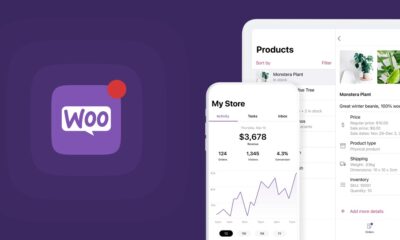Technology
Exploring the Pros and Cons of Implementing an Amazon VPC


In today’s technology-driven world, businesses are constantly looking for ways to streamline their operations and improve their infrastructure. One solution that has gained popularity in recent years is the use of Amazon Virtual Private Cloud (VPC). Amazon VPC is a cloud-based service that allows companies to create a private network within the Amazon Web Services (AWS) cloud environment, giving them more control over their data and applications.
As with any new technology implementation, there are pros and cons associated with using an Amazon VPC. This article will explore the benefits and drawbacks of implementing an Amazon VPC, including increased security, improved scalability, potential cost savings, and the complexity of setup and management.
What is Amazon VPC?
Users can build a private network inside the Amazon Web Services (AWS) cloud infrastructure using the web service known as Amazon Virtual Private Cloud (VPC). It allows users to launch their Amazon Elastic Compute Cloud (EC2) instances and define their own virtual networking environment that includes subnets, route tables, and gateways.
The benefits of using Amazon VPC include increased security by isolating resources in a private network, flexibility with customizable IP addresses and routing tables, scalability with the ability to add or remove resources as needed, and cost-effectiveness by eliminating the need for physical hardware. However, implementing an Amazon VPC requires technical expertise and can be complex and time-consuming.
Another disadvantage is potential performance issues due to limited bandwidth between VPCs or between on-premises networks and VPCs. Additionally, there may be additional costs associated with data transfer fees between VPCs or from on-premises networks to VPCs. Overall, businesses should carefully consider their specific needs before deciding whether implementing an Amazon VPC is right for them.
Benefits of Implementing an Amazon VPC:
One of the major benefits of implementing an Amazon VPC is enhanced security. By creating a private virtual network within the Amazon Web Services (AWS) cloud, organizations can isolate their resources and data from the internet and other networks. This allows for greater control over who can access sensitive information and reduces the risk of cyberattacks.
Another advantage of using an Amazon VPC is scalability. With this service, businesses have the ability to quickly add or remove resources as needed without affecting other parts of their infrastructure. This flexibility makes it easier to respond to changing business needs and avoid unnecessary expenses.
Finally, an Amazon VPC offers improved performance. By leveraging AWS’s global infrastructure, companies can reduce latency and improve data transfer speeds between different regions or availability zones. This can be especially beneficial for applications that require fast response times or handle large amounts of data transfer on a regular basis.
Drawbacks of Implementing an Amazon VPC:
One of the most significant drawbacks of implementing an Amazon VPC is its complexity. Setting up and managing a VPC can be challenging, especially for those who are unfamiliar with networking concepts or AWS services. It requires knowledge of various components such as subnets, route tables, security groups, network ACLs, and VPN connections. This complexity can lead to misconfigurations that compromise the security and availability of resources within the VPC.
Another drawback is cost. While it may seem like using an Amazon VPC is a more cost-effective solution than creating a physical data centre or using traditional hosting services, there are still expenses to consider. For example, there are charges for data transfer between different regions or availability zones within AWS. Additionally, if multiple VPCs are used to segment workloads, this can result in additional costs for infrastructure resources such as virtual private gateways and NAT instances.
Finally, implementing an Amazon VPC may not be suitable for organizations that require complete control over their infrastructure or need physical isolation from other customers on the same platform. In these cases, a dedicated hosting environment or private cloud may be a more appropriate solution than using public cloud services such as AWS.
Use Cases for Amazon VPC:
One of the most common use cases for Amazon VPC is to create a private network within the AWS cloud. This allows businesses to securely connect their on-premises infrastructure with their AWS resources without exposing them to the public internet. Additionally, it provides greater control over network traffic and security by enabling administrators to define custom routing tables and access controls.
Another use case for Amazon VPC is to create multiple isolated environments for testing and development purposes. By creating separate VPCs, developers can test new applications or changes without affecting production environments. This helps minimize downtime and risk while also providing greater flexibility in managing resources.
Finally, Amazon VPC can be used to host external-facing applications on AWS while still maintaining control over access and security. With features such as VPN connections, NAT gateways, and internet gateways, businesses can securely manage inbound and outbound traffic from their applications hosted in the cloud.
Overall, Amazon VPC provides a wide range of benefits for businesses looking to leverage the power of AWS while maintaining control over network security and resource management.
Pros outweigh cons in most cases
When it comes to implementing an Amazon Virtual Private Cloud (VPC), the pros outweigh the cons in most cases. One of the biggest advantages of using a VPC is increased security. With a VPC, users can create their own private network within Amazon Web Services (AWS) and set up their own security settings, such as firewalls and access control lists.
Another pro of using a VPC is more control over resources. Users can customize their virtual network topology, including subnets and routing tables, to fit their specific needs. Additionally, using a VPC can help save costs by allowing users to only pay for what they use and avoid unnecessary expenses associated with managing physical infrastructure.
Of course, there are some potential downsides to consider when implementing a VPC. For example, setting up and managing a VPC can be complex for those who are not familiar with AWS or networking concepts. Additionally, if not properly configured, a VPC could potentially lead to performance issues or downtime. Overall though, the benefits of using an Amazon VPC make it worth considering for businesses looking to increase security and have greater control over their resources in the cloud.
Conclusion:
In conclusion, implementing an Amazon VPC has its advantages and disadvantages. On the one hand, it provides a high level of security and control over your network traffic while also allowing for flexibility in managing your virtual machines. Additionally, it is cost-effective since you only pay for what you use. However, on the other hand, setting up an Amazon VPC can be time-consuming and requires a certain level of technical expertise.
It is important to carefully weigh the pros and cons before deciding whether or not to implement an Amazon VPC. If you have a large organization with complex networking needs that require extensive security measures, then an Amazon VPC may be worth considering despite its setup requirements. But if you have a small business or do not have resources dedicated to managing your IT infrastructure, then it may be more practical to stick with traditional cloud services or even on-premises solutions instead of implementing an Amazon VPC. Ultimately, the decision should be based on your specific needs and capabilities as well as your budgetary constraints.
Author Bio:
Shahanaaz Begum Shaik is a technologically savvy SEO Research Analyst. I am passionate about researching various technologies, startups, and big dreams in order to achieve various goals. I have extensive experience presenting information on market-leading technologies such as Palo Alto, SAP, Looker, AWS, Peoplesoft, Splunk, Denodo, Mainframes Interview questions, Tosca and Servicenow, etc.





 Technology2 months ago
Technology2 months agoWhy Adding Videos to WooCommerce Product Galleries is Essential in 2025



 General2 months ago
General2 months agoWhat Is Smart Construction? A Beginner’s Guide



 Technology1 month ago
Technology1 month agoHow to Send WooCommerce SMS Notifications for Orders



 Technology1 month ago
Technology1 month ago7 Essential TikTok Metrics to Track for Higher TikTok Views in 2025

 Model3 weeks ago
Model3 weeks agoTiffany Stratton: Biography, Wiki, Age, WWE Career, Net Worth, Before Fame, Boyfriend





 Technology4 weeks ago
Technology4 weeks agoTop 5 Tips for Using File Uploads in Your WooCommerce Store Efficiently

 Technology3 weeks ago
Technology3 weeks agoWhy Airlines Are Using Virtual Reality Services for Pilot Training



 General4 weeks ago
General4 weeks agoThe Hidden Costs of a DUI & How a Lawyer Can Help You Avoid Them




You must be logged in to post a comment Login